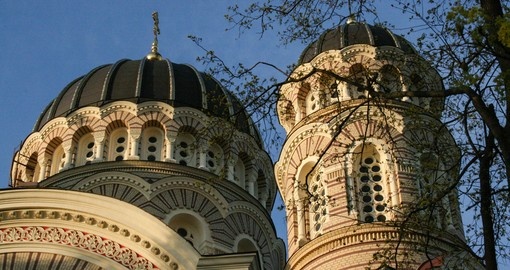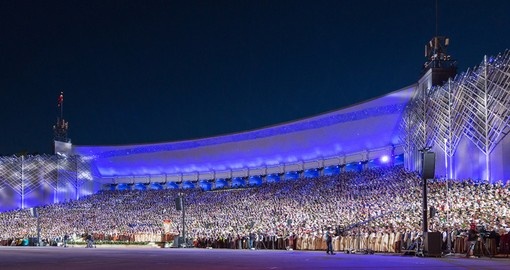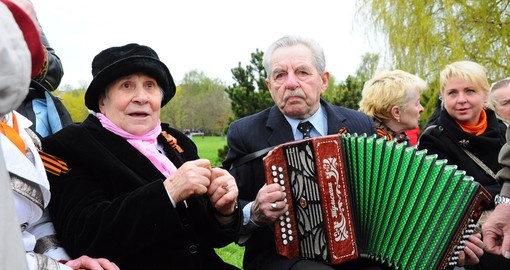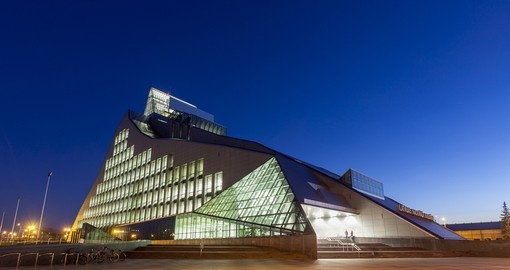Latvia History
Modern-day Latvians are the descendants of the Balts, a people who are believed to have first come to the Baltic area some 2,000 years ago. The Balts were divided into tribal kingdoms with the Letts, the Selonians, the Semigallians, and the Cours settled within early Latvian borders. These different groups would eventually come together to form one tribe.
Late in the 12th century, Christianity came to Latvia but did not receive a warm welcome. By the beginning of the 13th century, however, German crusaders who were led by Bishop von Buxhoevden of Bremen arrived. These crusaders were successful in conquering Latvia and they founded Riga, which remains the country’s capital and largest city.
Due to its position on the Daugava River, Riga had already established itself as an important trade route before the arrival of the crusaders. As northern German colonists came to the country, Riga’s role in trade expanded, becoming the major city in German-controlled Baltics. This expansion was aided by papal bulls that decreed that any German merchants had to bring their Baltic trade through Riga. The city joined the Hanseatic League, a confederation of merchant guilds, which granted it a great deal of political stability.
Despite the prosperity of Riga, there remained a constant struggle between the church, knights, and merchants. The area was eventually conquered by Poland in 1561. The Swedes came in 1629 and were also successful in conquering the area. Under Swedish rule, there were several changes in Latvia. Schools were established for the peasantry, serfdom was eased, and the ancient tribes came together as Latvian, speaking one Latvian language.
Following the Great Northern War, a conflict led by the Tsardom of Russia that contested Swedish control in Europe, Latvia came under Russian control. Latvia would remain under foreign rule until 1918, however, during this time, the area experienced the First National Awakening. This period in Latvian history was characterized by a national revival that saw the Latvian language used more in literature. As well as a national revival, Latvia also enjoyed an economic and construction boom and a great deal of infrastructure was built.
Much of the territory that would become Latvia was destroyed during the First World War. The population wanted self-determination and was finally able to declare independence in November 1918 following the Treaty of Brest-Litovsk and then the Allied armistice. This freedom was to be short-lived as the country faced Soviet occupation in 1939 with the Molotov-Ribbentrop Pact. Latvia was forced to accept a “mutual assistance” pact with the Soviet Union that allowed the Soviets to put troops on Latvian land. A puppet government was formed, and the first mass arrests and deportations were put into place.
Between 1941-44, control in Latvia switched to the Nazi regime. Anyone who opposed the Germans, or who cooperated with the Soviets was either killed or sent to concentration camps. As a result of this switch in power, Latvians fought on both sides of the war with more than 200,000 deaths, many of who were Latvian Jews. In 1944, Latvia was incorporated into the Soviet Union and would remain that way for the next 40 years.
The 1980s witnessed protests against Soviet control with the population wanting independence. The Popular Front of Latvia was formed in 1988 and gained a lot of support as it represented many social and political groups. In May 1989, the Popular Front of Latvia called for full independence and then in March 1990, the Popular Front of Latvia, having won a majority, declared independence in May of that year. A referendum in 1991 saw the country gain full independence. Joining the United Nations in 1991, Latvua then gained formal recognition of their independence from Russia in 1996 (after reluctantly ceding the Abrene region). The country joined both the European Union and NATO in 2004.
Latvia may not be the most well-known European country but there are certainly many things to discover. Riga’s old town has been declared a UNESCO World Heritage Site and was named a European Capital of Culture in 2014. It is therefore not surprising that Latvia remains the most visited country in the Baltics.
Get a Trip Quote Order a Brochure





















